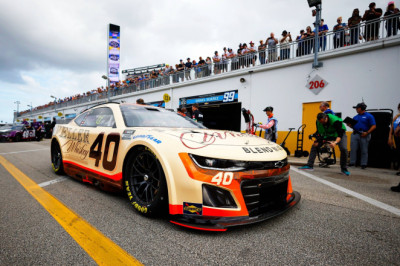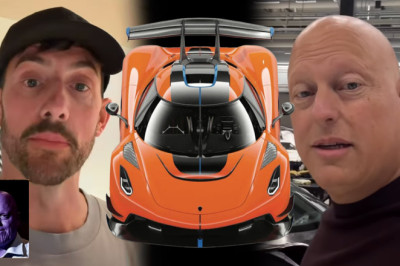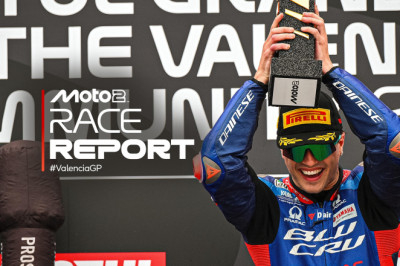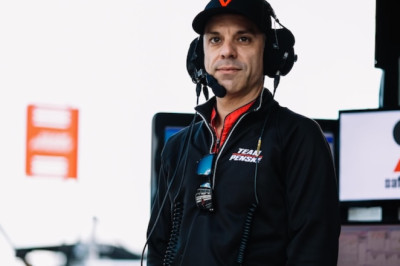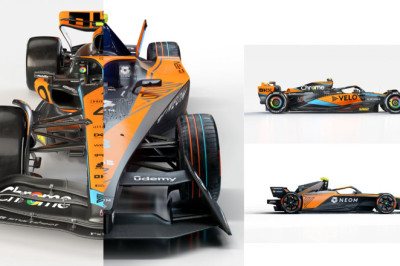
Market Overview and Growth Drivers
Classic cars, generally defined as vehicles over 25 years old with cultural, historical, or design significance, continue to attract collectors, enthusiasts, and investors seeking both financial appreciation and personal enjoyment. The market's growth is driven by factors such as rarity, provenance, condition, and iconic status. Auction houses like RM Sotheby’s and Bonhams serve as key facilitators, with online auctions expanding accessibility and global reach.
Online auction platforms have seen a significant surge, with some reporting a 500% increase in activity since 2020. This trend democratizes access to classic cars, drawing more international buyers and reinforcing price growth. At the same time, the rise of consumer-to-consumer platforms is challenging traditional dealership models, encouraging transparency and price competition.
Key Trends and Market Segmentation
-
Rarity and Historical Significance: Limited-production models or those with racing pedigrees and notable ownership histories command the highest premiums. For example, classic Ferraris, including the legendary 250 GT SWB California Spider, and rare Mercedes-Benz models like the 300 SL Alloy Gullwing, are among the top performers at auction. In 2025, the Ferrari 250 GT SWB California Spider witnessed a 15% price increase, with values approaching $20 million.
-
Investment Appeal: Classic cars are increasingly favored as long-term investments that offer diversification beyond traditional financial portfolios. Their scarcity and cultural cachet contribute to sustained value appreciation. Demand is particularly strong for blue-chip Italian and German classics, which dominate high-end sales.
-
Demographic Influence: A growing number of millennials, now aged between their mid-30s and 50s, are entering the classic car hobbyist market. This generation's preferences are shaping future tastes, with interest seen in both traditional pre-1980s collectors’ cars and more recent post-2000 models that may become classics, offering attractive entry points for new collectors.
-
Sustainability and Future Classics: While classic cars traditionally follow internal combustion designs, the evolving automotive landscape is sparking interest in early examples of electric and hybrid vehicles as future collectibles. Preservation and restoration standards are rising, supporting these cars as both artifacts and investments.
Challenges and Considerations
Investing in classic cars involves costs such as maintenance, insurance, storage, and restoration, which can be substantial depending on the vehicle's rarity and condition. Ownership requires careful selection and due diligence to mitigate risks like market fluctuations and overvaluation. The market has experienced corrections, notably following the COVID-19 boom, resulting in price stabilization though still maintaining healthy demand.
Moreover, the market landscape is shifting with digital innovations making prices and vehicle histories more transparent, empowering buyers to make more informed decisions. Dealers and auction houses are adapting to this evolving environment, blending traditional expertise with digital engagement.
Regional Insights
The United States remains a significant market, with industry revenue estimated at $2.5 billion in 2025. European collectors, particularly in the UK, Italy, and Germany, maintain strong demand, while Asia-Pacific emerges as a rapidly growing region fueled by increasing wealth and enthusiasm for classic automotive heritage.
Outlook for 2025 and Beyond
The classic car market is expected to maintain its growth trajectory through 2030 and beyond, supported by ongoing demand for rare, historically significant vehicles with strong provenance. As protocols for digitization and online sales mature, broader accessibility to the market will likely attract new participants.
Auction prices for well-documented blue-chip classics are projected to continue rising, while the market may also present new opportunities in later-model collectibles and emerging electric or hybrid classics. Overall, classic cars remain a compelling blend of passion, culture, and investment, offering a distinctive asset class that combines financial potential with the joy of ownership.
Key Classic Car Models Influencing the Market in 2025
| Car Model | Production Quantity | Significance | Appreciation Trend |
|---|---|---|---|
| Ferrari 250 GT SWB California Spider | 56 units | Highly rare, racing pedigree, elegant design | Approaching $20 million, steady increase |
| Mercedes-Benz 300 SL Alloy Gullwing | 29 alloy-bodied examples | Iconic design, competition history, advanced alloy construction | Strong values, record-breaking auctions |
| Porsche 911 Carrera RS 2.7 | Limited production | Legendary driving dynamics, motorsport lineage | Continued demand, price growth |
| Lamborghini Miura | Relatively low production | World’s first supercar, Italian design icon | Consistent appreciation |
| Jaguar E-Type Series 1 | Varies by series | Iconic beauty, strong demand | Value growth, especially original cars |
| Shelby Cobra 427 | Limited, race history | American muscle, British chassis, highly sought | Top dollar at auctions, strong demand |
| Toyota 2000GT | 351 units | Japanese engineering, rarity, historic importance | Surging demand, rising values |
| BMW M3 (E30) | Limited production | Modern classic, motorsport success | Fastest-appreciating 1980s classic |
| Aston Martin DB5 | Limited production | James Bond connection, British luxury icon | Consistent performance at auctions |
The growth of the classic car market in 2025 is being driven by several key factors:

-
Expanding Eligibility and Import Trends:
Vehicles built 25 years ago become eligible for import to major markets like the U.S. without modern emission and safety restrictions. For example, all cars built in 2000 became eligible in 2025, sparking a surge in imports, auctions, and market activity. New import opportunities are energizing demand for well-preserved and iconic models globally. -
Favorable Currency and Tariff Environment:
A weaker U.S. dollar in 2025 lowered purchase costs for buyers importing European classic cars, making investments more attractive. Additionally, low tariffs on classic cars (around 2.5%) compared to newer vehicles' tariff rates create a "collectors’ arbitrage," boosting demand and imports of older models. -
Rarity and Historical Significance:
Limited production runs, famous racing histories, celebrity ownership, and provenance enhance the desirability and value of classic cars. Collectors seek out rare models such as Ferrari 250 GT SWB California Spider and Mercedes-Benz 300 SL Alloy Gullwing, driving auction prices higher. -
Nostalgia and Emotional Connection:
Many buyers purchase classic cars as a connection to their youth, cultural icons, or automotive heritage. This emotional resonance strengthens market activity beyond pure investment considerations. -
Demographic Shifts and Younger Collectors:
Millennials and Gen Z, now in their 30s to 50s, are increasingly entering the market, attracted by a blend of nostalgia and modern accessibility. This new buyer base also shows interest in later-model classics and is shaping future trends. -
Online Auctions and Digital Marketplaces:
The growth of online platforms for buying and selling classic cars has democratized access and expanded the buyer pool worldwide. Some platforms have reported activity increases of up to 500% since 2020, fueling demand and price growth. -
Advances in Restoration Technology:
Improved restoration techniques and greater access to parts facilitated by digital tools make owning and maintaining classic cars more feasible. This supports demand and preserves vehicles' value. -
Electric Classic Conversions:
Emerging trends of converting classic cars to electric powertrains appeal to eco-conscious buyers and inject new interest and innovation into the sector. -
Regional Growth Dynamics:
The U.S. remains a major market, with Europe retaining strong collector interest. Meanwhile, Asia-Pacific is accelerating in growth due to rising wealth and enthusiasm for automotive heritage.
In summary, a combination of regulatory milestones, economic factors, technological innovation, demographic changes, and cultural passion is driving the classic car market's strong growth in 2025, creating a robust environment for collectors and investors alike.
Key Classic Car Models Influencing the Market in 2025

Ferrari 250 GT SWB California Spider
Widely regarded as a crown jewel in the collector car world, the Ferrari 250 GT SWB California Spider remains a benchmark for desirability, rarity, and performance. Its combination of elegant Pininfarina design, racing pedigree, and extremely limited production (only 56 built) ensures ongoing demand at global auctions. In 2025, values for top-condition examples are approaching $20 million, and the car continues to appreciate steadily.
Mercedes-Benz 300 SL Alloy Gullwing
The 300 SL Alloy Gullwing is an icon thanks to its distinct design, competition history, and advanced alloy construction. With only 29 true alloy-bodied examples produced, the rarity factor is high. Values have held strong or increased in 2025, often breaking previous world records at top-tier auctions.
Porsche 911 Carrera RS 2.7
Classic Porsche models, especially the Carrera RS 2.7, are highly prized among enthusiasts and investors alike. Known for its legendary driving dynamics, lightweight construction, and significance in Porsche’s motorsport lineage, this model has seen continued demand and price growth, reflecting the enduring popularity of air-cooled 911s globally.
Lamborghini Miura
Considered by many as the world’s first supercar, the Lamborghini Miura epitomizes Italian design and mid-engine innovation. Its iconic looks, rarity, and cultural relevance drive consistent appreciation, making it a staple in serious collections.
Jaguar E-Type Series 1
Dubbed “the most beautiful car ever made” by Enzo Ferrari, the early Jaguar E-Type Series 1 offers both investment potential and immense emotional appeal. Strong demand, especially for matching-numbers, low-mileage examples, fuels price growth in both the UK and international markets.
Shelby Cobra 427
The Shelby Cobra’s blend of American V8 muscle and British chassis finesse remains irresistible to collectors. Genuine examples, particularly those with documented race history, command top dollar and continue to attract new bidders and investors, especially in the United States.
Toyota 2000GT
Once an under-the-radar classic, the Toyota 2000GT is now prized for its rarity, Japanese engineering, and unique place in automotive history. Limited to just 351 units, demand for this icon has surged, supported by growing international appreciation for significant Japanese classics.
BMW M3 (E30)
Modern classic status has solidified the E30 BMW M3 as a star among younger collectors. Motorsport success, daily usability, and limited production numbers make it one of the fastest-appreciating 1980s classics, paralleling broader trends toward later-model collectibles.
Aston Martin DB5
Forever linked to James Bond, the Aston Martin DB5 combines British luxury with cinematic cachet. Its enduring appeal and consistent auction performance make it a perennial favorite with investors and collectors.
Classic Car Market Trends to Watch

Increased Interest in Post-2000 and Emerging Classics
Younger buyers influenced by childhood favorites and the digital era are driving demand for classics from the 1990s and early 2000s. Standouts include the Ferrari Enzo, Porsche Carrera GT, and first-generation Audi R8, all now seen as promising additions to diversified collections.
Growth in Japanese and Emerging-Market Collectibles
Enthusiasm for rare Japanese classics like the Nissan GT-R (R32/R34), Mazda RX-7, and Honda NSX is rapidly rising. This segment appeals to both traditional collectors and new entrants seeking accessible, investment-grade vehicles.
Online Auctions and Transparency
Digital platforms have revolutionized the classic car buying process, providing greater price visibility, broader access to international buyers, and increased liquidity. This has expanded participation and boosted values for a wider range of models.
Restomod and Electric Classic Conversions
The trend of converting classic cars to modern drivetrains, including electric power, is gaining traction among eco-conscious collectors. While purists still seek original examples, restomods offer modern performance and reliability, appealing to a different buyer demographic.
Sustained Demand for Blue-Chip Collectibles
“Blue-chip” classics—those with impeccable histories, limited production, and international recognition—remain the safest investments, consistently achieving strong returns and weathering market corrections better than lesser-known models.
Market Correction and Growing Sophistication
After speculative spikes and a post-pandemic correction, prices have stabilized. Buyers in 2025 are more informed, using digital history tools and expert guidance for smarter acquisitions, with provenance, originality, and documentation taking center stage.
In summary, the classic car market’s pillars in 2025 are legendary European icons, modern performance classics rising in prominence, increased digital access, and growing interest in alternative and emerging-market collectibles. These forces, combined with demographic change and global appreciation for automotive heritage, ensure the sector remains vibrant, dynamic, and full of investment potential.







